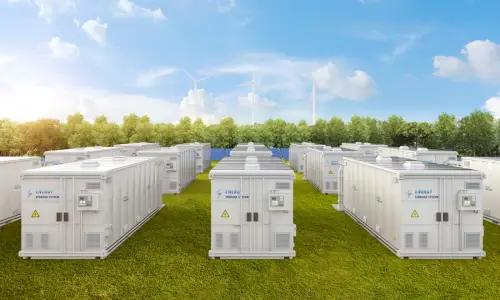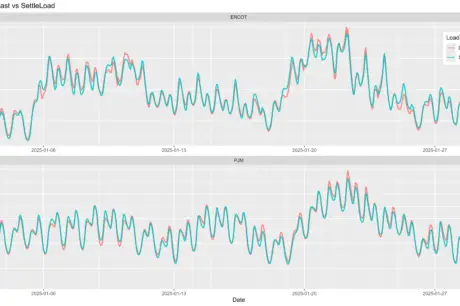To meet its ambitious climate goals, the U.S. must develop 100 gigawatts (GW) of energy storage by 2030. While energy storage capacity in the U.S. tripled last year, the market has only made a small dent with just more than 4.6 GW of operating storage.
That’s a lot of ground to make up. Considering energy use in the U.S. is higher than ever and global energy demand continues to rise, energy storage needs a jumpstart to provide more flexibility to the electric grid and handle the accelerating addition of renewable energy like solar and wind.
The Inflation Reduction Act (IRA) of 2022 could offer that boost through a long-sought-after new investment tax credit (ITC) for standalone energy storage and an extension of the existing ITC for solar and wind. The IRA will help expand storage through access, innovation, and improved economics, while utilities are already planning to increase much-needed storage integrations.
Stakeholders that can take advantage of the ITC will create benefits throughout the energy storage supply chain. It can help everything from alleviating the U.S.’ reliance on foreign entities for raw materials like lithium-ion to passing along savings to the end users.
How the ITC could boost storage
By establishing a pathway for standalone energy storage systems, the new ITC puts storage on an even playing field with other energy technologies, spurring more jobs and investment in the American storage industry and increasing grid resilience. It’s an industry waiting in the wings, poised to grow 30% annually worldwide through 2030.
The IRA makes energy storage and interconnection property eligible for a 30% ITC, while also extending solar and wind tax credits for another 10 years. This allows renewable energy developers to choose between investment tax credits based on installation costs and production tax credits based on power generation.
For taxable organizations, the IRA also offers a tax credit monetization option that enables the transfer of all or a portion of eligible credits to unrelated parties for cash without counting proceeds from the transfer as taxable income.
Improving the viability of storage projects
The IRA’s biggest impact on energy storage is that storage assets can now be developed on sites that best suit the project – not solely where they can be coupled with solar or wind. In many urban areas, there isn’t enough room for renewables and storage together. Enabling standalone storage projects — regardless of how they’re charging — removes complexities, increases financing options, and controls costs, improving the overall economics of storage installations.
Previously, the ITC required storage to charge for more than 75% of the time through solar or wind. Sites not charging 100% of the time, however, would not receive the full 30% ITC – only for the percentage of time they were charging — which hurts project economics. Without this, storage sites can operate more optimally or qualify for additional revenue or savings.
The ITC can especially help community storage projects that often work with microgrids to bolster resilience during extreme weather. Likewise, new regional markets for behind-the-meter storage projects for industrial or commercial applications will open up, thanks to improved economics and a growing number of state incentives. Standalone storage assets can also compete with and replace conventional gas peaker plants, enabling emission reductions.
Standalone storage flattens peaks
The biggest long-term benefit of energy storage is improving the grid’s operational efficiency and reducing peak congestion periods. When the grid isn’t operating at its best, renewable energy can get disrupted on its way to the end customer. What’s more, storage can eliminate the need for additional power plants to meet rare peak demands, preventing further environmental and financial costs.
Favorable financial scenarios mean more storage projects, which will lead to more renewables generated and more options for grid operators to manage energy supply and demand.
Most utilities’ integrated resource plans mention storage as part of their roadmap, and once the ITC for storage takes effect on Jan. 1, 2023, their timelines to implement more storage will most likely accelerate, bringing more control over peak demand. With a reduced cost of procurement, ratepayers should benefit from savings, too.
Potential challenges along the way
The promise of the ITC for standalone storage has some hurdles to overcome. For one, production costs for advanced storage technologies, like lithium batteries, have risen significantly due to supply chain disruptions. With the IRA, suppliers might decide to normalize these higher costs since developers are in line for huge benefits from the ITC. In turn, it may not drive down costs as much as we expect. It’s an uncertainty, to say the least.
Another consideration is how fast it will take the R&D component of the IRA for standalone storage to kickstart competition and more fully develop burgeoning technologies. How far these technologies come along will especially impact the viability of smaller projects. Flow batteries, for example, are a longer-charging alternative to lithium, ideal for large-scale utility and microgrid applications, but traditionally more expensive. Small and large developers alike should be talking to battery manufacturers directly to secure and scale their pipelines as needed.
As the IRA plays out, and the standalone storage ITC becomes a reality, there will be ample opportunity for developers and utilities to take advantage. Those who can prepare themselves with the right technologies, the best partners, and the ideal locations can make standalone storage a game-changer for managing demand across the American electric grid.
By Vinayak Walimbe, V.P. of Emerging Technologies (North America), Customized Energy Solutions












